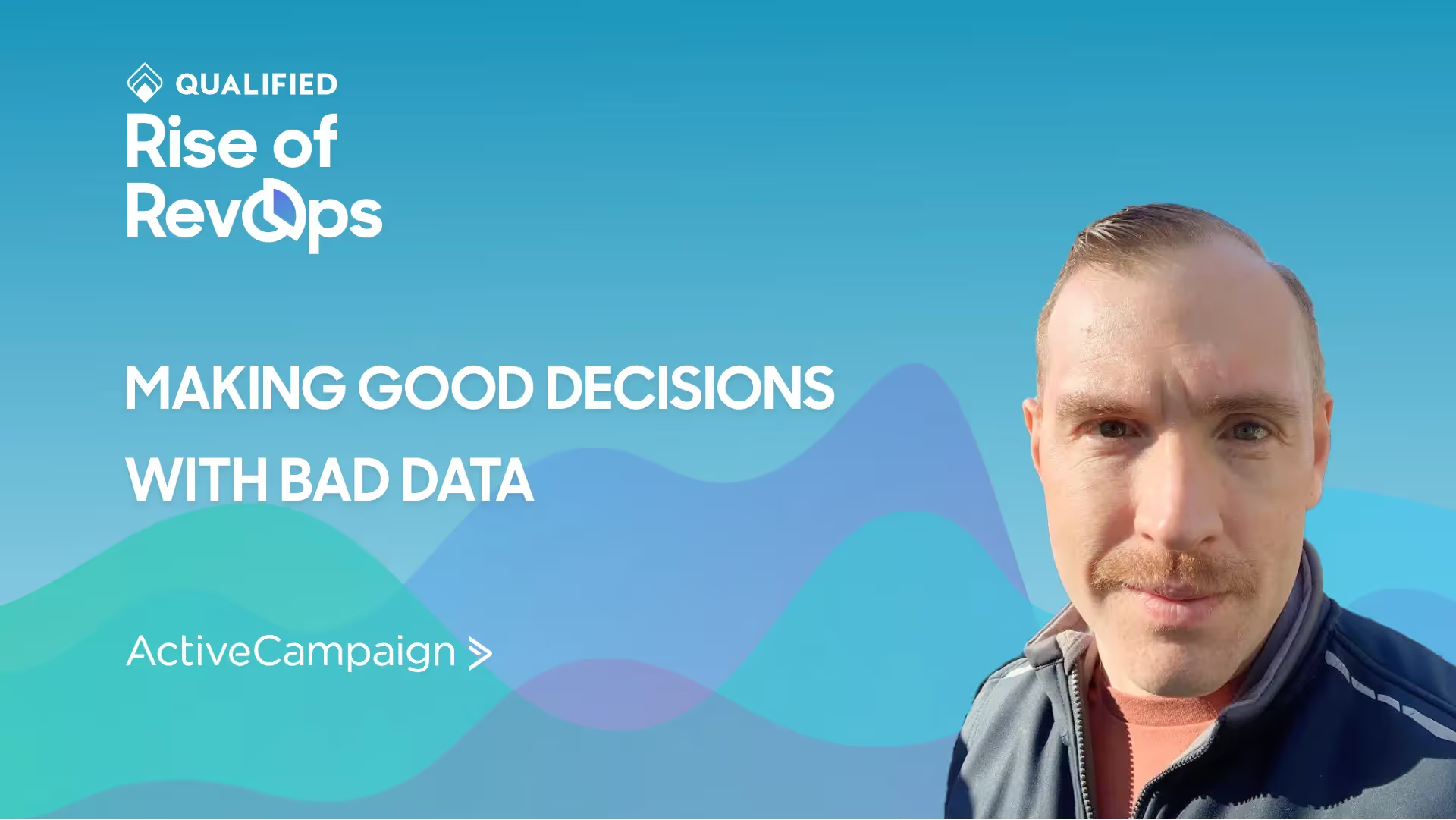Making Good Decisions with Bad Data
On this episode, Renee discusses the importance of knowing the key players in your organization, going from zero to one in a tech start-up, and being right vs being a good partner.




On this episode, Renee discusses the importance of knowing the key players in your organization, going from zero to one in a tech start-up, and being right vs being a good partner.

This episode features an interview with Adam Tuttle, Director of Revenue Operations at ActiveCampaign. ActiveCampaign's category-defining Customer Experience Automation Platform (CXA) helps over 180,000+ businesses in 170 countries meaningfully engage with their customers.
On this episode, Adam discusses the importance of defining RevOps within an organization, the challenge of making good decisions with bad data, and why it’s imperative to create a unified language across operational teams within a company.
Key Takeaways
Stay up to date with weekly drops of fresh B2B marketing and sales content.
On this episode, Renee discusses the importance of knowing the key players in your organization, going from zero to one in a tech start-up, and being right vs being a good partner.


This episode features an interview with Adam Tuttle, Director of Revenue Operations at ActiveCampaign. ActiveCampaign's category-defining Customer Experience Automation Platform (CXA) helps over 180,000+ businesses in 170 countries meaningfully engage with their customers.
On this episode, Adam discusses the importance of defining RevOps within an organization, the challenge of making good decisions with bad data, and why it’s imperative to create a unified language across operational teams within a company.
Key Takeaways
Stay up to date with weekly drops of fresh B2B marketing and sales content.
On this episode, Renee discusses the importance of knowing the key players in your organization, going from zero to one in a tech start-up, and being right vs being a good partner.


This episode features an interview with Adam Tuttle, Director of Revenue Operations at ActiveCampaign. ActiveCampaign's category-defining Customer Experience Automation Platform (CXA) helps over 180,000+ businesses in 170 countries meaningfully engage with their customers.
On this episode, Adam discusses the importance of defining RevOps within an organization, the challenge of making good decisions with bad data, and why it’s imperative to create a unified language across operational teams within a company.
Key Takeaways
Stay up to date with weekly drops of fresh B2B marketing and sales content.
On this episode, Renee discusses the importance of knowing the key players in your organization, going from zero to one in a tech start-up, and being right vs being a good partner.



This episode features an interview with Adam Tuttle, Director of Revenue Operations at ActiveCampaign. ActiveCampaign's category-defining Customer Experience Automation Platform (CXA) helps over 180,000+ businesses in 170 countries meaningfully engage with their customers.
On this episode, Adam discusses the importance of defining RevOps within an organization, the challenge of making good decisions with bad data, and why it’s imperative to create a unified language across operational teams within a company.
Key Takeaways
Discover how we can help you convert more prospects into pipeline–right from your website.